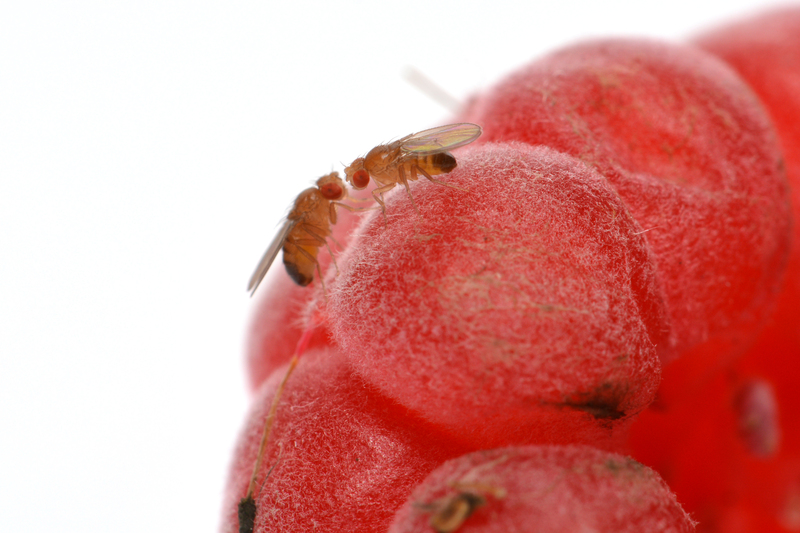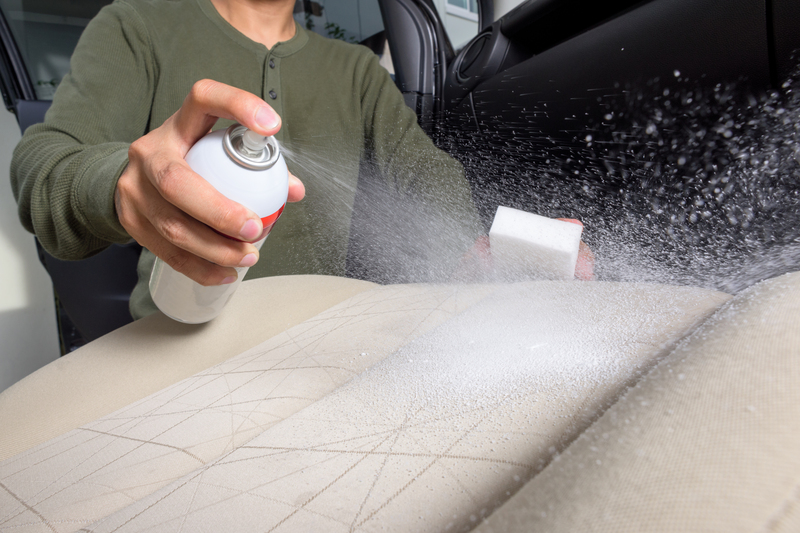The Ultimate Guide to a Mold-Free Bathroom Experience
Posted on 11/06/2025
The Ultimate Guide to a Mold-Free Bathroom Experience
Are you tired of spotting black patches, experiencing musty odors, or constantly scrubbing your bathroom tiles without results? Mold can transform your ideal bathroom into an unsightly, unhealthy environment. Fortunately, with the right knowledge, tools, and practices, you can achieve a consistently mold-free bathroom experience for life!
Understanding Mold and Why It Thrives in Bathrooms
Mold is a type of fungus that grows in moist, warm, and poorly ventilated areas--making bathrooms a perfect breeding ground. While some molds are harmless, others (like black mold) can cause serious health issues, including allergies, respiratory problems, and skin irritations.
- Constant Moisture: Showers, sinks, and tubs introduce moisture daily.
- Poor Ventilation: Bathrooms are often compact and may lack adequate airflow, especially during and after hot showers.
- Lack of Sunlight: Natural light is a natural inhibitor of mold growth, but many bathrooms have small or no windows.
Understanding these factors is the first step towards a mold-free bathroom.

Prevention: The Foundation of Mold-Free Bathrooms
Preventing mold is far easier and more cost-effective than addressing a full-blown infestation. Here's how to make your bathroom hostile to mold from the outset:
1. Optimize Ventilation
- Install an Exhaust Fan: Always use it during and after showers. An exhaust fan removes humid air and prevents condensation on bathroom surfaces.
- Open Windows if Possible: Fresh air helps dry out the bathroom and increases natural light exposure, both of which resist mold.
- Leave Doors Open: After showering or bathing, prop the door open to disperse moisture faster.
Pro Tip: To ensure total dryness, leave the fan running for at least 30 minutes after you shower or bathe.
2. Manage Moisture Properly
- Wipe Down Surfaces: After every shower or bath, use a squeegee to remove water from tiles, glass doors, and counters.
- Dry Towels and Mats: Hang them outside, or ensure they spread out to dry quickly indoors. Wet fabrics feed mold!
- Fix Leaks Promptly: Leaky faucets, pipes, or showerheads constantly introduce moisture. Address any leaks as soon as possible.
3. Use Mold-Resistant Materials
- Mold-Resistant Paint: Consider repainting with bathroom-specific, mildew-resistant paints.
- Avoid Carpet: Install tiles, stone, or waterproof vinyl rather than absorbent materials in your bathrooms.
- Seal Grout and Joints: Use waterproof silicone caulk and reseal tiled areas regularly to block out water.
Investing in mold-resistant upgrades is an excellent long-term strategy for maintaining a mold-free bathroom environment.
Maintaining a Mold-Free Bathing Space: Weekly and Monthly Routines
Consistency is key. Creating a routine ensures that mold never gets a foothold. Here's how to integrate bathroom mold control into your cleaning schedule:
Weekly Checklist
- Scrub Showers, Sinks, and Tubs: Use a detergent or a mild bleach solution to clear away soap scum and prevent mildew buildup.
- Launder Bathroom Linens: Wash towels, bathmats, and shower curtains regularly in hot water. Opt for quick-drying fabrics where possible.
- Empty Garbage: Prevent damp, organic waste from lingering.
Monthly Tasks
- Check for Leaks: Inspect under the sink, around the toilet, and behind the shower for unseen moisture.
- Wash or Replace Shower Curtains and Liners: Plastic liners can harbor mold; replacing or washing them monthly is wise.
- Clean Exhaust Vents: Dust and debris can reduce fan efficacy over time.
- Reseal Grout and Caulk: Cracks allow water to penetrate and nurture mold colonies. Reseal as needed.
Committing to these routines is the cornerstone of any effective mold prevention strategy for bathrooms.
Natural and Chemical Solutions for a Mold-Free Bathroom Environment
Even with the best preventive measures, occasional mold spots can appear. Knowing how to safely remove them--without damaging your bathroom--will restore cleanliness and peace of mind.
Natural Remedies
- White Vinegar: A classic non-toxic mold killer. Spray directly onto moldy surfaces, let sit for an hour, then scrub and rinse.
- Baking Soda: Mix with water to make a scrubbing paste; not only removes stains but also eliminates odors.
- Hydrogen Peroxide: 3% solution works as a bleaching agent for tiles and grout. Spray on, let bubble, then scrub clean.
- Tea Tree Oil: Powerful antifungal properties. Combine a teaspoon with a cup of water in a spray bottle. Spray, wait, and wipe.
Chemical Cleaners
- Bleach-Based Cleaners: Effective on hard, non-porous surfaces. Always use in well-ventilated spaces and wear gloves.
- Commercial Mold Cleaners: Formulated specifically for bathroom use--follow label instructions precisely.
- Ammonia: Never mix with bleach! Works on glass but is less popular due to fumes.
Always spot-test any new product (even natural solutions) in an inconspicuous area to guard against discoloration or material damage.
Spotting Hidden Mold: Inspection Guide for a Mold-Free Bathroom
Visible mold is easy to address, but hidden mold can be a silent enemy. Here's how to seek out the less obvious sources:
- Check Under the Sink: Look for water damage or musty odors in cabinet bases and plumbing connections.
- Inspect Behind the Toilet: Dark, damp nooks often go uncleaned.
- Remove Access Panels: Bathtub, shower, or plumbing panels can hide leakage.
- Look Up: Mold can appear on ceilings, especially if bath fans are weak or absent.
- Wall Paper or Paint Bubbles: Peeling finishes are indicators of moisture buildup behind walls.
Use your nose! A persistently musty smell often means mold is hiding out of sight. In these cases, consider hiring a professional for thorough inspection and remediation.
How to Shower and Bathe for a Mold-Free Bathroom Experience
Personal habits make a difference. Here are daily tips to easily reduce bathroom humidity and keep your space mold-free:
- Use the Exhaust Fan Every Time: Habituate yourself and your family to turning the fan on with every shower or bath.
- Shower with the Door Slightly Open: If privacy allows, this increases air circulation, speeding up drying.
- Squeegee Glass and Tiles: A 30-second swipe post-shower makes a huge difference in moisture reduction.
- Immediately Hang Up Towels: Never leave wet towels in a pile or on the floor.
- Keep Toiletries Organized and Dry: Water accumulates under bottles and soaps, creating microenvironments for mold.
The Role of Bathroom Design in Achieving a Mold-Free Sanctuary
Thinking of remodeling? Smart design choices can future-proof your bathroom against mold:
Lighting
- Maximize Natural Light: Large windows or skylights deter mold with sunlight and aid drying.
- Opt for Moisture-Resistant Fixtures: Metal or treated-wood fixtures last longer and resist humidity.
Flooring and Surfaces
- Large Tiles and Thin Grout Lines: Easier to clean, with fewer places for mold to hide.
- Non-Porous Materials: Porcelain, glass, and finished stone resist mold better than unsealed stone or carpet.
Shower and Bathtub Choices
- Frameless Glass Showers: Fewer seals and joints where mold lurks.
- Freestanding Tubs: Easier to clean around the base and under.
Storage Solutions
- Floating Cabinets: Off-the-ground storage prevents trapped moisture.
- Open Shelving: Circulates air better than closed cupboards.
Frequently Asked Questions: Achieving a Mold-Free Bathroom Atmosphere
How quickly can mold form in a bathroom?
Mold can begin growing within 24-48 hours in moist, poorly ventilated environments. That's why immediate action after wet activities is vital!
Are all types of bathroom mold dangerous?
Not all molds are toxic, but even "harmless" strains can cause allergies, trigger asthma, and make surfaces unsightly. It's best to eliminate all visible mold from your bathroom, no matter the type.
Should I use a dehumidifier in my bathroom?
Absolutely! If your bathroom is naturally humid or lacks ventilation, a small, portable dehumidifier can quickly reduce airborne moisture and discourage mold formation.
Can plants help prevent bathroom mold?
Some types, like Boston ferns and peace lilies, may absorb minor amounts of humidity, but they should not be your primary mold-prevention strategy. Too many houseplants can, in fact, increase mold risk if soil remains constantly moist.

When to Call a Professional for Mold Remediation
If you notice large patches of mold (over 10 square feet), persistent musty odors, or recurrent outbreaks despite thorough cleaning, it's time to involve experts. Professional remediation ensures all mold (visible and hidden) is permanently eliminated and that the root cause is addressed, such as plumbing leaks or water seepage.
Never attempt major mold removal yourself if you or your family have allergies, asthma, or compromised immunity. Safety first!
Conclusion: Create Your Ideal Mold-Free Bathroom Sanctuary
Transforming your bathroom into a mold-free oasis isn't complicated--but it does require vigilance, smart design, and consistent habits. Remember to:
- Prioritize ventilation and humidity control,
- Establish a regular cleaning and inspection routine,
- Adopt preventive materials and smart decor,
- Address leaks immediately, and
- Tackle spots of mold at the earliest sign.
A mold-free bathroom experience means better health, less stress, and a more beautiful home. Commit today, and enjoy the sparkling, fresh sanctuary you deserve!
Are you ready to take the next step toward a consistently mold-free bathroom experience? Bookmark this guide, share it with your family, and start transforming your space, one habit at a time!





